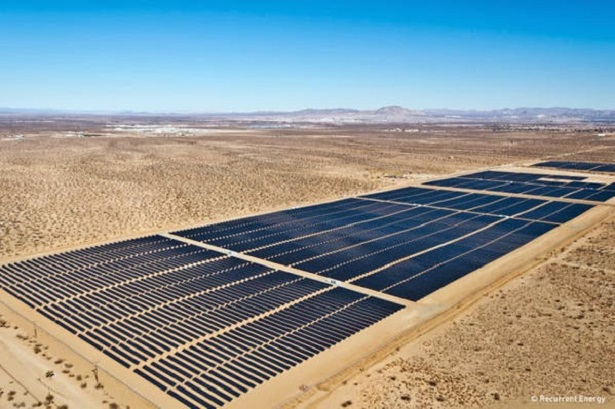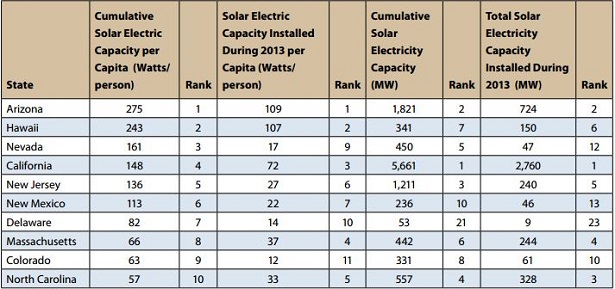Solar energy is on the rise. Over the course of the last decade, the amount of solar photovoltaic (PV) capacity in the United States has increased more than 120-fold, from 97 megawatts in 2003 to more than 12,000 megawatts at the end of 2013.
In the first quarter of 2014, solar energy accounted for 74 percent of all the new electric generation capacity installed in the United States.
The cost of solar energy is declining, and each year tens of thousands more Americans begin to reap the benefits of clean energy from the sun, including energy generated right on the rooftops of their homes or places of business.
America’s solar energy revolution has been led by 10 states that have the greatest amount of solar energy capacity installed per capita. These 10 states have opened the door for solar energy and are reaping the rewards as a result.
The Top 10 states with the most solar electricity installed per capita account for only 26 percent of the U.S. population but 87 percent of the nation’s total installed solar electricity capacity.
These 10 states – Arizona, California, Colorado, Delaware, Hawaii, Massachusetts, Nevada, New Jersey, New Mexico and North Carolina – possess strong policies that are enabling increasing numbers of homeowners, businesses, communities and utilities to “go solar.”
Other rising stars include New York, Vermont and Georgia, which have large or fast-growing solar energy markets and strong new solar policies or programs implemented since mid-2013.
Unfortunately, the success of solar power in these and other states has been threatened by recent attacks by fossil fuel interests and electric utilities on key solar policies, such as net metering. Despite those attacks, many states have reaffirmed and expanded their commitments to solar energy over the past year by increasing solar energy goals and implementing new policies to expand access to clean solar power.
By following the lead of these states, the United States can work toward getting at least 10 percent of its energy from the sun by 2030, resulting in cleaner air, more local jobs and reduced emissions of pollutants that cause global warming.
The below table lists solar electricity capacity in the Top 10 Solar States (ranked by cumulative capacity per resident; data from the Solar Energy Industries Association):
From 2012 to 2013, Arizona maintained its first-place ranking as the state with the largest amount of solar energy capacity per capita, with 275 Watts/person at the end of 2013.
California and Massachusetts both advanced two spots in the rankings to fourth place and eighth place, respectively, significantly increasing their per-capita installed solar energy capacity.
North Carolina continued its aggressive build-out of utility-scale solar energy, growing its per-capita capacity by more than 140 percent since 2012.
Report adapted from the executive summary “Lighting the Way“; The top ten states that helped drive America’s solar energy boom in 2013. Released by: Environment America Research and Policy Center
















Comments